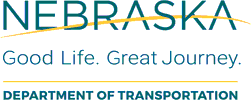Nebraska Local Technical Assistance Program

Nebraska Department of Transportation: Research Reports
Date of this Version
5-2023
Document Type
Article
Citation
Kim., S., Eun, J., Song., C. R., Sim, C., Van Phi, H., Abualshar, B., Ziaei, R. (2023). Feasibility Study: Application of Steel Sheet-Piles for the Abutment of Water-Crossing Bridges in Nebraska. NDOT Research Report SPR-FY22(010).
Abstract
The overall goal of this study is to investigate the anticipated performance of steel sheet-pile bridge abutments to encourage its wider application to not only new construction but also repair and replacement of existing water-crossing bridges in Nebraska. For this purpose, this study first reviewed several bridge cases with axially loaded sheet pile abutments, as well as previous in-depth studies related to the bearing capacity of sheet piles. Then, this study conducted the large-scale direct shear tests to better understand the interaction between sheet pile and soil. As a result, about four-fifths of the internal friction angle of fill sand was obtained as the interface friction angle. After that, this study conducted the static pile loading test with a down-sized test sheet pile. The ultimate bearing capacity of sheet piles obtained from three separate static pile loading tests was consistent. Analysis showed that the pile shaft carried most of the load (70% to 75%), while the tip resistance contributed up to 25% of the total bearing capacity. The CPT-based method resulted in an adequate match with the field test data, while the analytical method and SPT-based method appeared to slightly over- and under-estimate the side frictional resistance, respectively. Nonetheless, all predictions were comparable to the static loading test results. Upon the validation of the numerical simulation model, an extensive parametric study was conducted to investigate how various parameters may affect the performance of the sheet pile abutment system under the combined axial and lateral loading. After that, a summary of parametric numerical study results, including the maximum horizontal deflection, maximum vertical settlement, the factor of safety against shear failure, and the factor of safety against bending failure was prepared. Based on the study results, recommendations were made for follow-up research.

